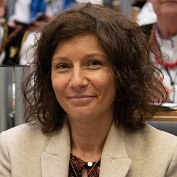Folk Religion: Today and Yesterday
A special issue of Religions (ISSN 2077-1444). This special issue belongs to the section "Religions and Humanities/Philosophies".
Deadline for manuscript submissions: closed (1 September 2022) | Viewed by 3516
Special Issue Editor
Special Issue Information
Dear Colleagues,
Religion understood as a system of meanings, as a cultural system, plays an important role in the formation of ethnic/national minorities/majorities also in the modern world. Folk religions are still important in this respect.
The main purpose of this issue is to show how ethnic/cultural practices go beyond the doctrine of organized religion, or how faith is interpreted and understood regionally compared to the religion of theological orientation.
From this perspective, both folk religion among the Sami or Seto are interesting, as well as the process of adaptation of native believes and practices to the American context by Afro-Americans in America.
It is also of interest how the mainstream religion(s) are practiced by individual nations, as exemplified by Catholicism in Ireland, Poland or Latin America.
The aim of this Special Issue is to investigate the subject of folk religion, its various meanings and definitions.
I would like to invite papers by authors wishing to provoke reflections on the role played by historical, sociological and anthropological research on folk religion.
Topics might include but are not limited to:
- examples of folk religion, contemporary and historical
- local/regional adaptations of the main religions
- local/regional sacred places or saints
Prof. Dr. Monika Mazurek
Guest Editor
Manuscript Submission Information
Manuscripts should be submitted online at www.mdpi.com by registering and logging in to this website. Once you are registered, click here to go to the submission form. Manuscripts can be submitted until the deadline. All submissions that pass pre-check are peer-reviewed. Accepted papers will be published continuously in the journal (as soon as accepted) and will be listed together on the special issue website. Research articles, review articles as well as short communications are invited. For planned papers, a title and short abstract (about 100 words) can be sent to the Editorial Office for announcement on this website.
Submitted manuscripts should not have been published previously, nor be under consideration for publication elsewhere (except conference proceedings papers). All manuscripts are thoroughly refereed through a double-blind peer-review process. A guide for authors and other relevant information for submission of manuscripts is available on the Instructions for Authors page. Religions is an international peer-reviewed open access monthly journal published by MDPI.
Please visit the Instructions for Authors page before submitting a manuscript. The Article Processing Charge (APC) for publication in this open access journal is 1800 CHF (Swiss Francs). Submitted papers should be well formatted and use good English. Authors may use MDPI's English editing service prior to publication or during author revisions.
Keywords
- Folk Religions
- Sociology of Religion
- Anthropology of Religion





